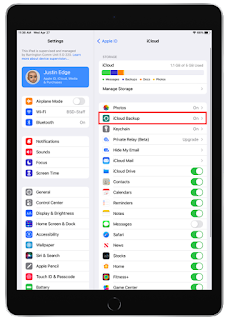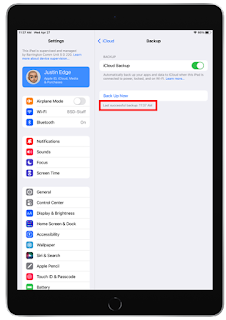In traditional learning environments, we ask students to demonstrate what they learned through a test at the end of a learning unit. This assessment could be a multiple-choice test, an essay, a presentation, or many other formats. Without digital technology, these assessments almost always involve a single mode of communication. In an essay, students use text to convey what they know. In a presentation, they primarily use speech. In the best cases, such as an old-fashioned poster presentation, students might have combined pictures, charts, or diagrams with words.
Many of us believe in the power of technology to transform teaching and learning, but the reality is that we often do very ordinary things with it. Merely having students write a traditional essay on their iPad instead of paper does not change anything. The true benefit of technology comes when students use iPads to do things that were difficult or impossible to do without them. Multimodal knowledge representation is one of those things. Instead of “writing an essay,” students can create a piece that incorporates text, video, audio, and interactive widgets that allow readers to experience the piece in various ways. This format makes a richer experience for the reader, but creating a multimodal piece also benefits the student producing it.
One of the lessons I remember from my teacher preparation program was Six Hat Social Studies. Students analyzed a complex social or historical problem from different lenses in this interactive group activity to get a more holistic picture of the event. For example, students in a world history class watched a video and read a textbook chapter about the fall of the Berlin wall, then analyzed the information in the following ways:
- Student 1: Recorded the objective facts and information about the wall coming down
- Student 2: Identified the feelings or emotions one might have living in Berlin at the time
- Student 3: Identified potential negative consequences
- Student 4: Identified possible positive outcomes
- Student 5: Thought creatively about possible innovations or changes that might occur
- Student 6: Organized and considered all the other thinkers in the group to determine which perspectives were most important for understanding the issue
The group then discussed all the different ways of thinking about the event and each shared their perspective. The goal of the Six Hat Social Studies lesson was that students who considered the facts, emotions, outcomes, and creative possibilities of an event would develop a deeper understanding with the ability to transfer that knowledge to other events. However, this was difficult to do because students were all exposed to the same information and expressed their understanding in the same way.
Now let’s imagine that same lesson in the modern classroom. Instead of watching a video or reading a textbook, students are invited to explore an uncountable number of photos, video clips, text, audio, charts, and diagrams available on the Internet. Resources are updated and improved as new information is discovered. We are no longer stuck with the static representation of events in a textbook. For younger students or for time constraints, these resources can be curated into LibGuides by our talented librarians.
Students then collaboratively create a piece to represent their thinking about the topic. Instead of a discussion with notes, students use Pages or iMovie to combine audio, video, text, and photos to demonstrate their understanding. The act of grappling with a complex topic in various ways requires critical thinking and creativity on levels previously not possible. For example, consider the critical analysis a student must practice to select a piece of music that conveys the emotions of a historical event—or the depth of knowledge required to write the script of a narrative to produce a voiceover for a video. Even selecting and using existing materials from expert sources requires a high-level understanding of the topic.
By asking students to produce a multimodal representation, teachers then have a varied and interesting source from which to evaluate student understanding. Asking students to represent what they know in various ways increases the likelihood of an accurate picture of what the student knows and, therefore, increases the assessment's validity.
The goal of consuming and producing complex concepts in various ways is not new. It is well established that multimodal representation deepens understanding of a concept, ensures understanding persists over time, and enables students to transfer that knowledge to other contexts. Technology transforms learning not by redefining research-informed best practices, but by making those practices possible on a large scale.
Barrington 220 supports a variety of apps and platforms that students can use to create multimodal representations of their learning.
Apple iWork Suite: iWork is Apple’s communication and design software collection. Pages, Keynote, and Numbers allow users to easily combine text, video, audio, and photos into a single document. In addition, these platforms have design elements to produce beautiful, professional-level documents that can be exported to many formats.
Google Workspace: With Docs, Slides, and Sheets, Google offers a more utilitarian version of iWork. While Google Workspace has fewer design features and is restrictive in incorporating video and audio into a document, its collaboration features make it a favorite among teachers and students.
Book Creator: For younger students who might be overwhelmed by the complex features of Google or Apple products, Book Creator is an excellent option. This kid-friendly and intuitive platform allows students to easily add videos, pictures, and audio to a document.
Adobe Spark Collection: Adobe offers Spark Page, Post, and Video to create stylish, high-quality magazine-style documents. These can be made to look like web pages, Instagram posts, or other formats.
Apple iMovie and Clips: If a video is the desired product, it’s hard to beat Apple’s two video editing options. iMovie is a movie production studio that offers a wide range of features. iMovie is simple enough that a student can start using the app after only a few minutes of instruction. iMovie also provides many advanced editing features. Clips is a powerful and quick movie editor that is best for TikTok or Instagram-style videos when you want your students to create a short video clip. Clips also has an extensive and growing library of royalty-free music that students can use to create a soundtrack for their projects.
















